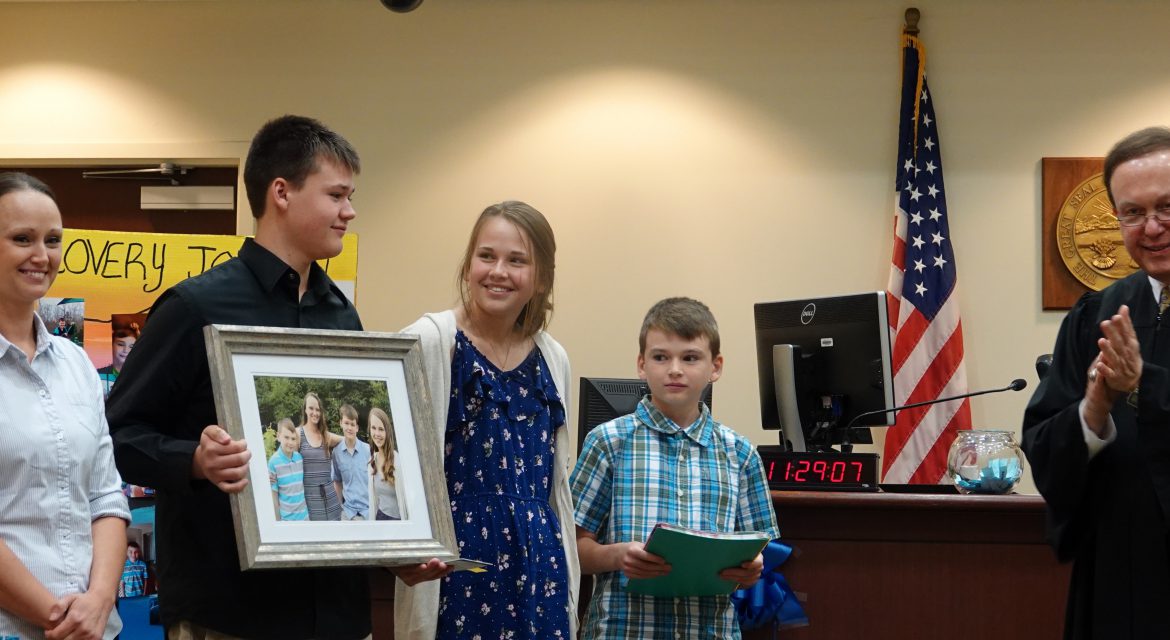
BATAVIA, OH (Sept. 4, 2019) — Childhood trauma. Criminal history. Homelessness. Unemployment. License issues. Family history of addiction.
It’s common for parents of kids 18 and younger to come to Clermont Family Recovery Court with all of these daunting challenges.
“The parents face much more than treatment alone,” Judge James A. Shriver said. ”There are many layers in recovery. They must re-establish themselves in many ways, including finding employment, establishing housing, taking care of legal matters, and creating a sober support system to maintain them, while at the same time attending Substance Use Disorder treatment.”
The specialized docket under Judge Shriver was one of the first of its kind in southwestern Ohio when it started on Nov. 13, 2014. Clermont County Family Recovery Court was based on the drug court model, which emphasizes treatment over punishment.
People come to the court at the breaking point. They’ve burned all bridges. They need accountability.
“This program is hard, but if people really follow through they will be successful,” said Angie Livesay, the court’s coordinator. “We tell them to expect devoting at least the next year of their life to this.”
On average, the program takes more than a year to complete. Families (couples or individuals) voluntarily enter Family Recovery Court. Sixty-two percent of those who participated six months or longer have reunified.
“Addiction is losing your children; it’s fighting for your life,” Lorraine Brock, who graduated last year, said in the Clermont Sun. “When you have people who are willing to be there and help you and say, ‘Hey, do something. We’ve got your back, but you gotta do it…’ If I don’t take care of myself, there is no mom…”
Requirements include attending frequent court hearings, Substance Use Disorder treatment, random and frequent drug screens, meetings with a case manager, calling and checking in regularly, attending AA or similar sober support meetings and getting a sponsor or mentor, having income, establishing housing, taking care of criminal matters and getting a driver’s license.
Seventy percent of participants lacked safe, sustainable housing where their child(ren) could be returned to when the parent entered the program. Eighty-four percent of participants who lacked housing established it during their time with the court.
“People who do better take responsibility,” Judge Shriver said. “They make a plan. They find a good support system. They change their belief system.”
Participants work closely with a recovery coach, who helps them get started attending 12-step or similar meetings and makes herself available to talk.
At her graduation in June, Barbara, a 38-year-old mother of three, credited Family Recovery Court for giving her much-needed accountability.
“One day at a time and by the grace of God, I’m sober today,” Barbara said. “I owe a lot to the Eastside Center (an AA clubhouse), my sponsor and a lot of meetings. My passion today is service, giving back.”
Livesay said: “She was committed to recovery, to attending meetings, to building a community of support. Participants are more likely to succeed when they totally focus on and put great effort into their recovery.”
“This hasn’t been the easiest thing,” Barbara said. “I’ve gone through so many changes, but I’m not alone. It’s teamwork.”
####